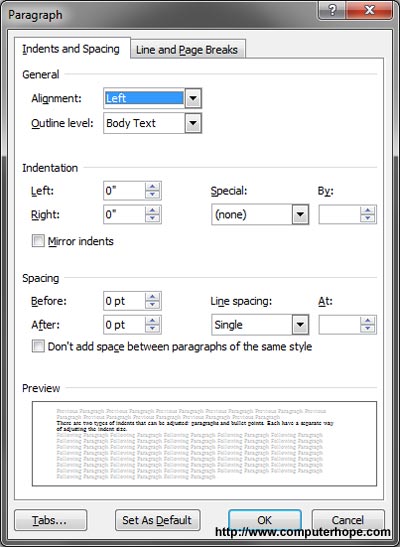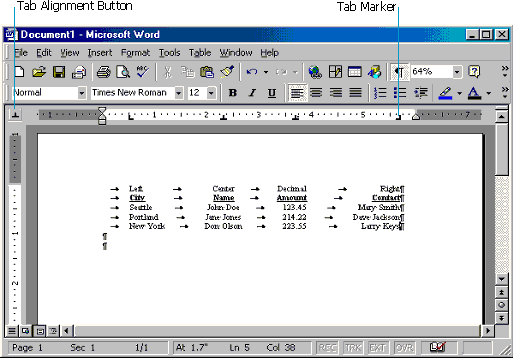
- Word 2013 how to tab one line how to#
- Word 2013 how to tab one line update#
- Word 2013 how to tab one line full#
You can specify the look of the horizontal line by double-clicking on it. Choose Horizontal Line in the drop-down menu. In the Home tab, click the inverted triangle behind the Borders icon within the Paragraph section. Locate the mouse cursor where you plan to insert a line in Word.
Word 2013 how to tab one line how to#
#3 How to Make a Line in Word? (Horizontal & Border Lines)Īnother way to put a line in Word is via the Ribbon. Or, you can right-click on the line and specify your preferences. You can customize the line by clicking on it, select the Layout Options icon or further choose See more. Then, release the mouse button and you will see a line ranging from the area where your mouse has gone through. Move your mouse cursor to the target location in your Word document, hold and drag your mouse pointer to a new location. In the drop-down menu, under the Lines section, select a type of line you like. Within the Insert tab on the top menu, click on the Shapes option. If you have a desktop version of Office, just click Open in (program name) in your desktop program to open the file and make use of the cropping tools.Īlso read: How to Use Find and Replace in Word? #2 How to Draw a Line in Word? (Multi-shape Line)īesides automatically create a line in Word, also, you are able to manually draw a line instead. Please note that the AutoFormat function isn’t available in Office Online. If you want to further add text above the line, just locate the cursor where you’d like the text to be and start typing. If you are within a column, the line will match the width of the column.
Word 2013 how to tab one line full#
Then, the three characters will become a horizontal line for the full width of the page. Do the same for the rest of the levels (heading 2, heading 3, etc.) in your document.Step 3.

As a result, all the Heading 1s in your document will be linked to default heading 1.
Word 2013 how to tab one line update#
From the drop-down list, click option Update Heading 1 to Match Selection. Click the down arrow button on the extreme right. Locate the heading level 1 in the Styles pane.Place mouse cursor over it. Keeping your heading 1 selected in the document, click Alt+O+S. Once you are done with establishing connections between the heading levels in the document to default heading levels, apply the same to all heading 1s, all heading 2s, and so on in the document. Similarly, restore connections for the rest of the heading levels (heading 2, 3, …etc.) in your document. Click heading “1” and subsequently from the drop-down list Link level to style , select Heading 1 style. Assume that these are the heading levels in your document. In the dialog box, you can see the heading levels as 1, 2, 3,….9 on extreme left under the label “Click level to modify”. We will restore the links using the Define New Multilevel List dialog box.Ĥ. At this point, understand that the main reasons for the numbered headings going out of order are due to the missing links between heading levels that you have applied and the corresponding default heading styles of Word. The dialog box expands with additional fields. From the dialog box, click button More (available on the left bottom corner). Define New Multilevel List dialog box appears.ģ. From the drop-down list, click option Define New Multilevel List. Select the first heading level and then from the Word Main menu, under the tab Home, within the group Paragraph, click the Multilevel List icon. In your current document, where the list numbering has gone wrong:ġ. I am assuming, you already know how to create Multilevel list in Word (if not, learn here: ).

In this article, we’re discussing a few tricks to quickly fix and streamline messy multilevel numbered heading as quickly as possible. Documents with hundreds of pages and multiple heading levels are particularly difficult to manage in Word. For many, creating and fixing multilevel lists in MS Word is a nightmare.


 0 kommentar(er)
0 kommentar(er)
